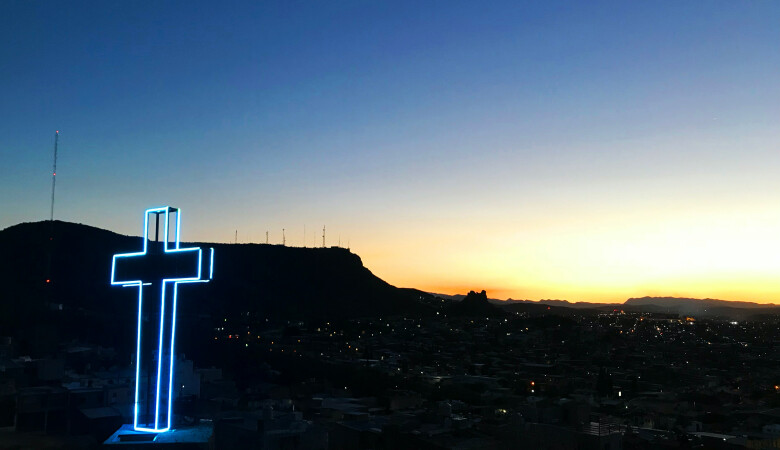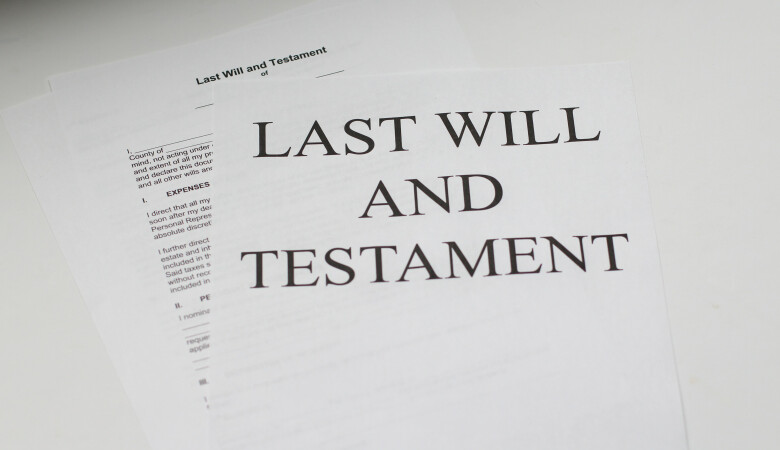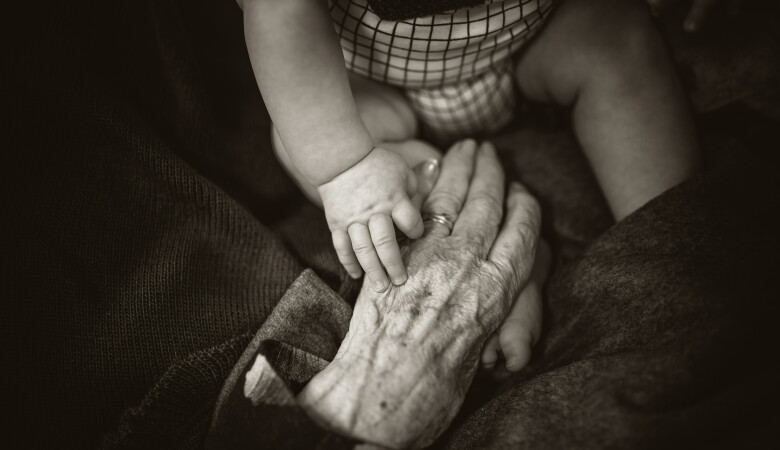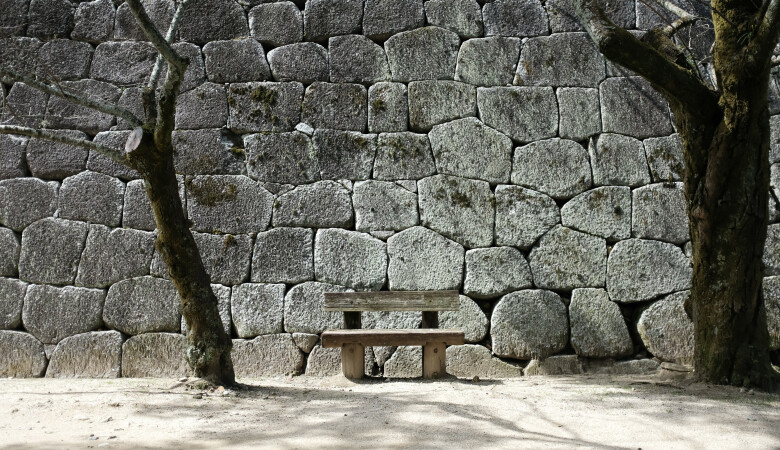The Tabernacle Symbols Have Been Fulfilled by Christ (Hebrews Sermon 32 of 74)
June 19, 2011 | Andy Davis
Hebrews 9:1-5
The Law of God, Old Covenant, Animal Sacrificial System
The Life of Faith
Hebrews 11, one of the great and glorious chapters of the Bible. We haven't gotten to it yet, but God willing, we'll get there in time. But it celebrates a life of faith, and that is very, very much what we must do in the new covenant religion, we are called on to walk by faith and not by sight. These things that we are dealing with are invisible things. We cannot see them, we can't handle them, we have to accept them by faith based on the word of God. But in that glorious chapter, in Hebrews chapter 11, it talks about the patriarchs, Abraham, Isaac and Jacob, and how they live by faith in the promised land. Not having received any of those things that were promised, but seeing them and welcoming them only at a distance, they lived their lives that way.
And one of the evidences that the author to Hebrews gives of that life of faith, is that they lived in tents in the promised land. Now, a tent is a temporary dwelling. It's something that you can move easily, it's light weight. And you can pull up the stakes and you can move that very day, and be in another place later that day or tomorrow. And what's fascinating to me, as we come to Hebrews 9:1-5, a contemplation of the Tabernacle, it's amazing me that God chose for a time to dwell in one sense spiritually, in a tent, with the people of Israel. Why did He do it, what was He choosing to communicate to us by dwelling in a tent, and that is that the permanent dwelling place of Almighty God with His people has not yet come. That God is moving from place to place, and that only in the final salvation, that Christ brings will set up with His people and permanent face-to-face fellowship. And so for a time, God chose to dwell in a tent.
And our purpose today as we come to Hebrews 9:1-5, is to understand that tent that holy place, that sanctuary, that tabernacle, to try to understand why God established it as He did, what were His reasons, to give honor to those reasons. And to understand based on Hebrews 8:13, I'll mention that again in just a moment, but that it's obsolete, it's time has passed the time for the tent, the Tabernacle is over, it has been fulfilled in Jesus Christ, all of the truth that's wrapped up in the symbolic elements of that tabernacle, have come to pass, in Jesus they are fulfilled.
The Context of Hebrews: The Supremacy of Christ Over All Things
And so we're going to try to understand that. Now let's get a running start in terms of our context here, remember that the Book of Hebrews was written to some Jewish people in the first century, who had made an outward profession of faith in Christ, perhaps, I think, certainly I think had testified to it by water baptism, were in the process of worshipping with the people of God week-by-week. But they were under attack by the surrounding Jewish culture, by Jewish authorities perhaps, political authorities, by religious authorities. By their neighbors, they're unsaved family members, friends, co-workers, under intense pressure, to forsake Christ, to turn their backs on Jesus and go back to old covenant worship, and the animal sacrificial system, that was first established through the tabernacle. All of those things that would be at the center of what they were being tempted to go back to. And so the author's strategy in the Book of Hebrews is to give us Jesus, to give us the glories and the majesty and the greatness of the person of Jesus Christ. And I think we've seen no book does that in quite the way and with quite the glory that the book of Hebrews does.
I mean, we could study this for years and never quite see all of the glory of Jesus that we need to see it. But he has been comparing Jesus across these eight chapters now into the ninth chapter, with elements of the Old Covenant. Trying to show that the Old Covenant has been fulfilled, has been superseded, in the new covenant that Jesus came to bring. So we see the superiority of Jesus Christ, the supremacy of Christ, superior to the Old Testament prophets, superior to the angels, who mediated the old covenant, to Moses. Superior to Moses who was a servant in God's house, but Jesus a Son over God's house. Superior to Joshua who brought them into the physical promised land, where they stayed temporarily until their sins evicted them under the stipulations of the old covenant, which they could not keep did not keep. Jesus is superior to Aaron and to the Levitical priesthood, the Aaronic priesthood, Jesus superior to all of this. We've been looking at that.
And we've turned the corner a bit now in Chapter 8, and we've seen the new covenant that Jesus comes to bring. The marvelous elements of the New Covenant. How God said he will write His laws on our minds and on our hearts, and He will be our God and we will be His people. No longer will a man need anyone to teach him saying know the Lord. For we will all know the Lord from the least of us to the greatest, for He will forgive our wickedness, and He will remember our sins no more. Those are the beautiful elements of the old covenant that we studied last time.
The First Covenant is Obsolete
And then he makes a transition in verse 13 of chapter 8. He's saying, "By calling this covenant new, He has made the first one, obsolete, and what is obsolete and aging will soon disappear." And now we go immediately from that into chapter 9, verse 1-5, to talk about the tabernacle. So he's discussing something that is now in his mind, obsolete. It's aging, it must soon pass away. That's the transition. So I've given you some context now. But I want to just stop and just make a point. That's a point of lasting value and contact to us, and that is we need to remember what God was seeking to do with these first century professors of faith in Christ, these Jews, is one of the most difficult things that God has ever asked any generation. He's asking them by faith to turn away from the religion they have known since they were children, just about every aspect of it. To just turn really almost on a dime. The moment that Jesus said, "It is finished," the curtain in the temple was torn in two from top to bottom. Their religion was obsolete. And to just learn a whole new way of worship in spirit and in truth, very, very difficult. So he wants them to know that whenever God asks them to give something up, He gives them something infinitely better in return, and that is just a lasting principle, isn't it?
Think about how Jesus began to assemble His disciples on how he walked by the Sea of Galilee, and there He sees two sets of brothers, four people, Peter, John, James, and Andrew and they're fishing by the side of the lake there, and He says to them very boldly and clearly, "Follow me and I will make you fishers of men." And immediately they left the boat and their nets and their father, and followed Jesus. And the same thing with Matthew, sitting at the tax collector's booth, and Jesus passes by, He's moving on, the kingdom of heaven is moving. And He says to Matthew "follow me," and immediately Matthew gets up and leaves that lucrative though somewhat shady and corrupt business of being a tax collector, and he follows Jesus, leaves it all behind.
Whenever Jesus calls on you to leave something behind the thing that He's going to give you in its place is infinitely superior. We were talking, my kids and I, as were driving in about the word obsolete, so I asked one of them, I said, "Do you know what the word obsolete means?" "Kind of." I said, "Well let's take the type writer, for example. I mean, have you ever seen me on a typewriter?" "No, I've never seen you on it." "I used a typewriter in college." Alright, I did. I hate to admit that I know it dates me. Or the phone that you dial. You remember dialing those long numbers and things, etcetera, like that. Those days are over although we still have hold over terminology. You still hang up with your cell phone, I don't know where you hang your cell phone, maybe on your belt, I suppose, but we still use this old terminology but it's obsolete language.
So I say, "What does it mean obsolete? It's when something is replaced by something better, and that's what's going on here. Whenever the Lord calls on us to give something up He replaces it with something infinitely better. But if you don't follow Him by faith, you're going to be the losers, spiritually. Jesus said, "If anyone would come after Me, let him deny himself and take up his cross and follow Me, for whoever wants to save his life will lose it, but whoever loses his life for My sake will find it." And so these first century Jews were called on to release their old conceptions of religion, to give it up and follow Jesus into the new covenant, and wholeheartedly by faith follow Him. "For What would it profit a man to gain the whole world and lose his soul, and what would a man give in exchange for his soul." "For the Son of Man is going to come in His Father's glory and all the angels with Him, and then He will reward each person according to what he has done." So when He calls on you to give up something, you're not really the loser, you are going to find your life, you're going to find Christ.
Conversely with the rich young ruler, remember? Called on him to sell everything he had, give to the poor, he would have treasure in heaven and come follow me, but the man went away sad because he had great wealth. Really, these Hebrew Christians, these professors of faith in Christ. They were at the fork in the road and they had to decide to follow Jesus on into the promised land, and so do we. So we come down to this contemplation of the Tabernacle, and it's a symbolic thing. Look at verses one and two in Hebrews nine, now the first covenant. The one that's obsolete now, the first covenant had regulations for worship and also an earthly sanctuary. A tabernacle was set up. And so we have this symbolic Tabernacle, this picture of Christ redeeming work. So he's referring to this tent. Would have been well familiar to them, they would have understood what it was.
Now, we have to pause and say, that I don't think any of them had seen the tabernacle either, because it has long since been replaced by the temple in the time of David. David thought it was time to replace the movable tent. And so the focus from that point on was on the temple. But in a fascinating way here, the author to the book of Hebrews never mentioned the temple. Never once. Ten times, he talks about the Tabernacle, never once the temple. I think the reason is, he's looking specifically at the elements of that Old Covenant that were established on Mount Sinai through Moses. He's zeroing in on that, and he's talking specifically about this symbolic tabernacle, which is a picture of Christ's redeeming work. Now the author is saying, and he begins in chapters 9 and 10, having considered the greatness of Christ in His person, he's going to zero in here, in chapters 9 and 10 on the blood sacrifice, that Jesus gives. And say that the blood sacrifice of Jesus is superior to that of the Old Covenant. So he begins by talking about the tabernacle. He's going to say that the Ministry of blood that Jesus offers is superior because of the place in which He offers it, that place was earthly, Jesus offers in a heavenly tabernacle. Of which the earthly was just a pattern and a picture, a type and a shadow.
He's going to say, secondly, in Hebrews 9 and 10. That the blood itself is superior, because it's the blood of the Son of the living God, that was just blood, the blood of bulls and lambs sheep and goats, animal blood. So the blood itself is superior.
And thirdly, the blood sacrifice is superior because it was offered once for all, never again to be repeated, whereas the animal sacrifices repeated endlessly. So the place is superior heaven versus earth, the blood is superior, the Son of God versus the blood of animals, and the time is super once for all, verses endlessly repeated. That's where he's going.
The Tabernacle: Established by God as Merely a Symbol
But we begin by looking at the place, this sanctuary. Now look what He says, He gives us two descriptions here, the earthly sanctuary. An earthly sanctuary was set up in the first covenant. Now, the first thing we have to realize is, it was the covenant that God made with Moses that gave the stipulations for this tent.
Now, I've been saying that God gives us something infinitely or vastly superior in every case, but notice with what respects and what dignity the author to Hebrews deals with these elements that have now been superseded. They were established by God, and so Jesus is superior to the prophets, but that doesn't mean the prophets were of no value, they were godly men who spoke the word of God in their time at various times and in various ways. But Jesus speaks a better and final word, that's all. And Jesus is superior to Moses, He is just a servant in God's house and Jesus is a Son over God's house, but Moses is still a man of honor. Called by God, a godly man, worthy of honor. So also Joshua, a godly man led them into the Promised Land, Jesus is superior but we're not denigrating any of these things, we're not denigrating the Aaronic priesthood. Aaron priestly ministry was established by God. And so it is with this tent that was set up, we're not denigrating it. It was set up by the covenant of God, God wanted it done.
But we still need to understand its limitations and that it has been superseded by the New Covenant, that's all. And so he gives us these two terms; an earthly sanctuary. Alright, let's take the second word, the word sanctuary, the word sanctuary literally refers to a sacred place, a sacred place. So my mind immediately goes to that time when God first called Moses into his service. You remember how he's up there on the mountain of God, and how he saw the Bush, the burning bush, and he heard God calling him, Moses, Moses. And he came over to look at this bush and he heard Him say, "Do not come any closer, Take off your sandals, for the ground on what your standing is holy ground." So that's what a sanctuary is, it's a place here on earth that set apart unto God as sacred and holy. And specifically in the history, it's where God would in a marvelous way meet with His people.
It was holy because God would be there. So it was a sanctuary place set apart, where God would meet with the people, but it's also called an earthly sanctuary, an earthly sanctuary. What do we mean by that? With the Greek word is cosmocone. It relates to the cosmos or the created physical universe, it has to do with the physical stuff of this world, of this life. This tabernacle is made up of earthly stuff. You could interact with it with your five senses. It was Earthy. We don't mean worldly in the sense of wicked, or evil, not at all, but it was made up of earthly stuff. Primarily, there were these linen curtains of blue and Scarlet and purple, and so they were just woven up out of linen. Now linen it grows up out of the ground. It's something that was living and it's harvested and made into yarn and then ultimately into these curtains, it's earthly. And so also the tabernacle itself was covered with ram skins, dyed red, and then over that, where the skins of sea cows or the dugong, anyone ever heard of dugong? Have you ever seen a picture of a dugong? Maybe you have, I don't know what it is, but some kind of an aquatic creature whose skin would presumably be water repellent.
And I covered it over, but I'm telling you what, all of these formerly living things begin to decay as soon as they are made, and so, whether it's moisture or heat or ultraviolet light or something, they're just going to age, they're going to wear out. As Jesus said, "Where moth and rust destroy, and so moth and rust can come in and destroy these things, though they are made of the highest quality of materials. There's still earthly. Jesus serves in the heavenly sanctuary not built by human hands, not made by humanity. And so we're talking about an earthly sanctuary. Therefore it is man-made and it is temporary. That's what the author is giving us.
Now, the structure of it, if you can imagine your mind, it's a long rectangle. 30 cubits by 10 cubits, now a cubits about 18 inches. So, half again, so it's about 45 feet long, and about 15 feet wide, and a long rectangle. But even that's divided up into two sections you've got a two-part kind of compartment. You've got an outer area called the Holy place, completely enshrouded with these curtains and then you have an inner area called the most holy place, or famously in the KJV, the Holy of Holies, don't you love that expression, the holy of holies, the most holy place. So we've got this two-part sanctuary. Now, the author describes symbols in each of them, three symbols in the holy place, and then seven physical symbols that he describes In the most holy place. Let's look first at the symbols in the holy place. The holy place was the place where the priests would carry on their daily ministry. Only the priest could go in there and they went on every single day, offering their sacrifices day after day without end. That's the Holy Place.
The inner area, the most holy places, as we'll discuss in a moment, only the high priest could enter, and that only once a year and never without blood, the Book of Hebrews is telling us. So that's the two part distinction. Now again, the lesson of this is clear, we've spoken about it in the past. I don't think we can say it too often. It's just like God said to Moses, at the account of the burning bush, "Don't come any closer." That's it. It's just amazing what God does, He's got this burning bush burning, fascinating. Never seen anything like it. That's attraction. You want to be there to find out what's going on. God is there. But as soon as you start moving in that direction, you get a prohibition from the Holy God saying, "Don't come any closer." And that's what this Holy Place, Most Holy Place, is saying to the human race. You may not come any closer. You are on the outside and you are looking in. And so that's what we've got to deal with here.
The Lampstand
Now, these elements in the first room, the outer room where the priest went on constantly to carry on their ministry. We have a lamp stand, a table, and the consecrated bread. This is in the most holy place. Let's look at the each of them briefly. The lamp stand, had seven lamps made up of hammered gold, beautiful thing, and it was there simply practically to give light. You can imagine with these heavy curtains and the coverings and all that, it would have been pitch black, even on the brightest day, and so there is no light in there, except that given by the lamp stand. Now, this is a marvelous thing. I want you to know what we're doing is we're seeing symbolic significance to each of these things. Verse 9, which is not in our text today, but in Hebrews 9:9, it says that this whole tabernacle was a in the Greek, parabolē, a parable, a type or symbol or representation. It was somehow speaking symbolically about Jesus. And so it's not wrong for us to go through as over-somehow allegorizing or something, to find how each of these elements does speak about Jesus.
Do you have to work very hard to wonder how the lamp stand speaks of Jesus? I think not. Jesus says, "I am the light of the world, whoever follows Me will never walk in darkness, but will have the light of life." Jesus is the light of God speaking truth to us, illuminating us, communicating to us. Without Him we are in total darkness. Now, what's so amazing about this and this thought hit me this very morning, I'd never had this thought before. But you go into this holy place, and it's pitch black, without that lamp, you go into the most holy place, it's pitch black, but the Bible says that God dwells in unapproachable light. How do you put those two together? Pitch black, God dwelling in unapproachable light? Well, the way I put them together is you know what it is that makes that be pitch black, are the curtains that God commanded be built. God is forbidding us to come any closer. And then is luring us in through Christ, and when Christ then comes in, the prohibitions are removed and we step into a world of unapproachable light. And so it says in 1 John 1, "If we walk in the light as He is in the light, we have fellowship with one another and the blood of Jesus cleanses us from every sin."
And so, what is it that made it black? It was the prohibitions of God saying, "You may not come any closer," and if we're not with God, what are we, but in total darkness. And so God sets up this lamp stand, it points to Christ, Christ shines. The oil is given every day by the Israelites. They were commanded to give pressed oil for the lamp to keep it burning, and it was to be burning constantly to give light. And so it represents Christ.
The Table
Secondly, we have the table. Now the table was golden, beautiful made, magnificent. What does it represent? Well, I think throughout scripture, table represents food. And we'll get to that in just a moment, but it also it's symbolic for fellowship. It's symbolic for relationship. So if you're sitting at someone's table, you have a relationship together, you have friendship together, to eat at someone's table. Think about what David said in Psalm 23, speaking to God, "You prepare a table before me in the presence of my enemies." In other words, "God I can have good fellowship with you in the middle of my... I can be surrounded by enemies and I can have just a feast with God." Isn't that marvelous? So God prepares a table for us, and we have fellowship with Him. And to me, that's beautiful.
Or again David, from the life of David, remember how he wanted to show kindness to the house of Jonathan, Jonathan was deceased at this point. Died at the same time as his father, but David had a covenant and a friendship and he wanted to express that love and that friendship he had for Jonathan. There's someone left, and yes there was this son Mephibosheth one of Andy's favorite people. Mephibosheth. It's hard to say. I practice that this morning. Mephibosheth. But Mephibosheth sat at table, at the King's table with the King every day, and that represents the fellowship that we have with God. God wants face-to-face fellowship with us.
The Consecrated Bread
And then on the table, we have this consecrated bread, the bread of the presence it's called. Literally in the Hebrew, the bread of faces. And so, face-to-face fellowship over the bread. Or the show bread in the KJV, you have this consecrated bread. 12 loaves, one for each tribe was baked freshly every Sabbath.
And again, with the manna that we'll talk about in a moment, but it represents God's desire to feed us nourishment, to enable us to feed, and I'm going to cluster it together with the manna, and say Jesus is clearly the fulfillment of this. "It is not Moses who has given you the bread from heaven, but it's my Father that gives you the true bread from heaven." "And the bread that he gives for the life of the world is His flesh." And so through this, through His death, we have fellowship with God, we have nourishment, sustenance. Jesus is the bread of life. Fulfillment. So that's the outer place where the priest were constantly working in the holy place.
Seven Symbols in the Most Holy Place
Then we have behind the second veil or second curtain, verses 3-5, a room called the most holy place, which had the golden altar of incense, the gold-covered Ark of the Covenant. And this Ark contained the gold jar of manna, Aaron's staff that had butted and the stone tablets of the covenant, and above the ark where the cherubim of the glory overshadowing the atonement cover. So these are seven elements in the most holy place.
Now again, the most holy place was a perfect cube. 10 x 10 x 10 cubit wise. 10 cubits, by 10 cubits by 10 cubits. Perfect cube. Just like the new Jerusalem by the way. Read about it and Book of Revelation. We won't go there we won't talk about it, but it's just a perfect cube. And it represented the place where Almighty God dwelt Himself. And the laws were very clear, that no one was allowed to go in there, ever except one day. And so every day, but one even the high priest knew he was forbidden from going in there. What kind of sense of the fear of the Lord would you have as you enter in there? And the fact that he had to offer sacrifice for his own sins, so that he would not die. A sense of the terror of the Lord, that's what the most holy place was all about. And on the day of atonement, he would enter in Leviticus 16 describes us very plainly, but there's all these rules about what must happen in order to enter the Holy of Holies or the Most Holy Place.
The Golden Altar of Incense
Now, the first element mentioned here is the golden altar of incense. Now we don't know exactly or literally whether this is an altar itself or a golden sensor. There's a translation issue, but in any case, incense filled the most holy place when the priest was in there. And if you read about it in Leviticus 16:12-13. I not going to quote it in detail, but basically, the incense, the cloud of incense, finely ground incense was burned and a cloud filled the most holy place to cover the Ark so that the priest would not die. That's literally what it says. I find this interesting. Now in the book of Revelation, and in other places, this cloud of incense represents prayer, intercessory prayer. And so what I get out of this is that this represents the intercessory ministry of Jesus, how He pleads the merit of His blood. And in some ways puts a barrier between the eyes of a holy God and our sinfulness, so that we will not die. And so Jesus is praying for you. Perhaps you've committed sin, this week as a believer in Christ, but you didn't die. And why is that? Because of the value, the merit of Christ's blood and the efficacy of Christ's prayer, have in some way hidden God's holy eyes from your sin, He is no less omniscient, He knows what you did. But the cloud gets between God, His holy eyes and your sinfulness. And you do not die. Golden altar of incense.
The Ark of the Covenant, Covered with Gold
Secondly, the Ark of the Covenant, the Ark of the Covenant was the most significant physical artifact, more time is spent in Exodus 25-40, which gives instructions about all of this on the ark than any other physical item. It was the focal point, their God would meet with His people. It was a little more than a chest a box made of acacia wood covered inside and out, with pure gold. It was just a box, but that box represented the dwelling of God with His people. And so when the Ark of the Covenant was captured in 1 Samuel, the wife of Phinehas cried out, "Ichabod the glory has departed from Israel," it represented the glory, the glorious dwelling of God with His people. And friends that can only happen in the heavenly realms through the ministry of Jesus Christ, our great high priest, God will not deal with us on account of any other thing.
Based on Jesus' intercessory ministry, His blood shed on the cross, God can and will dwell with His people forever. The Ark of the Covenant is fulfilled in Christ. And there above the Ark, between the cherubim God said, "I will meet with you," and it's fascinating how Moses heard God speaking from between the cherubim. Amazing. And how God localized His voice there above the mercy seat between the cherubim, there in a cloud of Shekinah the dwelling glory of God, their God met with His people. That was the significance of the Ark of the Covenant.
The Golden Jar of Manna
We have also the golden jar of manna. It's unclear whether it's actually inside the ark, it seems like, in Hebrews, it is. Other verses said there was nothing in the ark but the tablets, it could be that the golden jar of manna, you remember the manna was the bread that God provided every day while they were sojourning in the wilderness, was in the actual ark in the days of Moses. And then by the time that the ark was brought into the temple in Solomon's day, there was nothing at that point in the ark but the tablets of the testimony. But anyway, the golden jar of manna, as I've already said, represents God feeding His people supernaturally through Jesus Christ. Jesus is the bread that came down from heaven.
Aaron’s Staff that Budded
We have also Aaron staff that butted, what was that? Well, it turned out that the Jews were jealous of Moses' and Aaron. And a man named Korah led a rebellion in number 16, led a rebellion against Moses and against Aaron, specifically against Aaron and his right to be priest. What right does he have? And so, Korah led this rebellion. Well, you remember what happened, how Moses said... I'll tell you what, Moses actually had a temper, from time to time. But you sense a sense a bit of heat here, as Korah is leading this rebellion. And he says, "I'll tell you what, if you die in an ordinary way, then you know that we've not been chosen by God for this role. But if the earth should open up and swallow you, then you'll know who God has chosen to be His priest." And as soon as he got done saying that, that's exactly what happened. The Earth opened up and swallowed Korah and all those that followed in his rebellion. But amazingly the next day the Israelites still murmured against Aaron. Isn't that incredible, the intractable nature of our sin. How deep is the stain and how difficult to remove?
And so Moses commanded that each tribe bring forward a staff, just a stick cut from a tree. And laid it down. 12 of them, one of them represented Levi, the tribe of Levi, and on this stick representing Levi, Aaron's name was written, and the next day, miraculously this one staff, this dead thing, had in some amazing way come to life. As though it had some beautiful root system and it was a well watered tree, and it flowered it butted, and actually even produced almonds that could be eaten. And I wonder if anyone actually did eat the almonds? I don't have any idea, but it's just flourished and though it was dead. And to me, this represents the resurrection of Christ. Jesus is our high priest, he has been chosen and identified to Israel as our high priest, by His resurrection from the dead, the flowering that comes from Jesus' ministry. For 2000 years fruit has come from Jesus. And Jesus is in that way identified as our high priest, in a way far superior to Aaron staff that had butted.
The Stone Tablets of the Covenant
And then we have the stone tablets of the Covenant, these represent the law of God. On the basis of that law, God relates to us His sinful people. These two stone tablets with the Ten Commandments, you remember how God had carved out these two stone tablets and had written on them, in the finger of God, these Ten Commandments that he'd already proclaimed to the people. But the people were already disobeying by making a golden calf, and so, when Moses carried those two stone tablets down the mountain, he was enraged at their rebellion and threw them down and they were shattered. Symbolic of the fact that we can't keep this covenant. We are sinful. We cannot keep the stipulations of the Covenant.
But two more tablets were made. The law of God can't disappear. And so the Ten Commandments were written again, with the finger of God and they were in the box, they were in the Ark of the Covenant. And this clearly represents Jesus Christ as the fulfillment of the law of God, Jesus Christ said, "Do not suppose that I came to abolish the Law and the Prophets. I have not come to abolish them, but to fulfill them." As it says in Psalm 40, "Here I am, Oh Lord. It is written about me in your scroll, I have come to do Your will. Oh God, Your law is written in my heart." Who is that speaking about who Jesus? Doesn't say in Galatians Chapter 4, "In the fullness of time, God sent His son, born of a woman, born under the law, to redeem those who were cursed by the law by becoming a curse for us." And so Jesus died in obedience to the law. Just as through the disobedience of the one man the many were made sinners, so also through the obedience of the one man the many are made righteous, because Jesus obeyed the law even to death. We are counted righteous based on the testimony of God.
The Cherubim of the Glory
We have the cherub of glory, their actual angels. Did you ever wonder how the artist could do pictures of cherubim? I think they saw them. Moses saw it all up on the mountain. And so, maybe Moses did a sketch of what a cherub looks like. But at any rate, they were right there. Physical representations of these cherubs with wings extending and touching. And there between the cherub, these angels, which are surrounding the throne. Many psalms talk about this, Ezekiel 1, the cherub are there. You've got it in the Book of Revelation, chapter 4:6-8, you got these cherub, these angels around the throne. Their God meets with us. Such a beautiful, beautiful fulfillment of this IC in John chapter 20, when Jesus Christ has been raised from the dead. Remember that, and Mary's outside crying, and she's thinking she's talking to the gardener. You remember that whole thing? But before that she's looking into the empty tomb, she looks into that empty tomb, and she sees the grave clothes wholly undisturbed in their original position like a, almost like a cocoon, that's how I picture them.
Jesus just came right up out of that sticky, tarry, kind of thing, right up out of that and he's gone, but the grave clothes are right there. She's looking in and there were two holy angels there, one at the head and the other at the foot. And just sitting there, in testimony of the fact that this is the new mercy seat, this is the new place where God will meet with His people. It's been fulfilled, in the resurrection of Christ, the cherub of glory.
The Atonement Cover
And then finally, we have the atonement cover, which is to cover the ark and there the blood of the sacrifice was to be poured, the priest, the High Priest would get the blood out, out in the outer area and bring it in that one time a year and pour it out the blood right on the gold cover. And that's where it was to be offered, is called the atonement cover or the mercy seat, the place of propitiation, the place where God deals with our sin. And this clearly fulfilled in the cross of Christ, how it says, in Romans chapter 3:23, "All have sinned and fall short of the glory of God, and are justified freely by His grace through the redemption that came by Christ Jesus. God presented Him as a propitiation through faith in His blood, through Jesus shedding His blood. Our sins are atoned for the wrath of God is dealt with."
Now, in verse 5, you may be wondering about verse 5, but we cannot discuss these things in detail. Now, you may be wondering "Well Pastor, why are you then discussing these things in detail now? You know what, I struggle with that. I remember saying to Eric, I think all we're supposed to do, is just read the verses and not preach on them. Well, let's just skip them. I feel bound by Verse 5, but I obviously got over that, didn't I? And I went ahead and preached on it, like we preached the rest. What the author is saying is, "Look, I could say a lot more about these details than I'm doing." There is one central point I want to make. All of these things pointed ahead to Christ. They didn't achieve anything in and of themselves, they were types and symbols and shadows. The reality, the fulfillment is only in Christ, as we'll talk about next time in Hebrews 9, 6-10. They had no power to remove sin, or cleanse the guilty conscience of the worshipper. They had no power for that. They had only symbolic power to point ahead to Christ. That's the point of what we're saying today.
Applications
Now, what application can we take from all of these? First, just marvel at the teaching ministry of the Holy Spirit. In verses 6-10, I'll talk about the Holy Spirit showing by these things. The Spirit has been instructing us today, as He did for hundreds and hundreds of years through the tabernacle, instructing us about Christ. Christ is a difficult lesson, it's not easy to understand Jesus and what He came to do. And so the Lord set up this tabernacle to teach us who Jesus is and what He came to do. So marvel at that. And secondly, just learn the various lessons of these symbols, study them. Isn't it amazing how God created heaven and earth in six days? And the account is just one chapter, Genesis Chapter 1. But the Tabernacle, the instructions were given for 40 days. It took 40 days to describe this thing. And then, however long it took to make it. And why is that? It's because God gets more glory from redemption than He got from creation. And how beautiful is it that since the days of the New Covenant being established, the Lord has been working on His final dwelling place, for two millennia now.
For 2000 years, Jesus said, "I go to prepare a place for you." And we are the place where God will dwell, we are the temple of the living God, and He's been getting us ready now for 2000 years. How much glory will God get from that? Just meditate on these things, they will greatly encourage you. Celebrate the powerful fulfillment in Christ, just celebrate that Jesus Has done it all paid it all, lived it all His righteousness is yours. And if I can just urge you tenderly, I prayed for it but now I urge you, if you have never come to Christ, come now, come today. You don't know how long you have to live, there is no other salvation. There's no other propitiation, there's no other way that sin can be paid for. I plead with you to turn from your sin, to repent and have your guilty conscience completely cleansed through the blood of Jesus. And if you are a believer in Christ, you need to keep going to the cross and have your own guilty conscience cleansed through confession of sin and appropriating again through faith what Jesus has already done for you. And take this Gospel message out to a world that needs it, take this Gospel to people who need to hear it this week, share the Gospel of someone this week, invite them to church. Strike up a conversation and say that there is no other way that a guilty conscience can be dealt with than the blood of Jesus. Close with me in prayer.






























